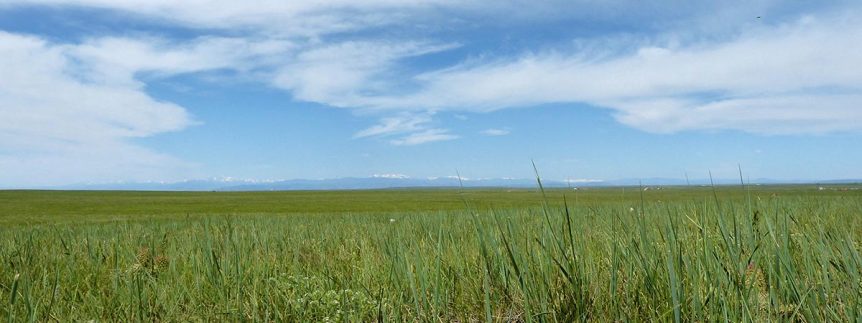Read the Transcript
Good grazing management is good for the livestock producer and for wildlife. When grazing-land is healthy, cattle put on the weight, and birds benefit from healthy grassland. The key is designing a grazing system that fits a producer’s climatic conditions, soils, topography and vegetation types. In many cases, the most productive and ecologically sustainable operations are those that reproduce the spatial heterogeneous conditions found over thousands of years on the Great Plains.
Fritz Knopf is a preeminent grassland bird researcher who’s written extensively on the ecology of the short- and mixed-grass prairies of the Great Plains. I asked Fritz what this term “spatial heterogeneity” means.
“Spatial heterogeneity is referring to the mixing of different grassland heights. There is a general consensus that birds don’t respond to the species of grasses as much as the height of the grass and the coverage of that grass on the surface. So, the more you mix that up, the more heterogeneity you have.”
Others refer to this idea as a mixed mosaic of grass heights and plant mixes. However, traditional grazing management approaches, like continuous grazing, have reduced the heterogeneity of the western Great Plains. That, in turn, reduces the amount and quality of habitat for birds and other wildlife that thrive in these more complex landscapes.
But, 80 percent of grasslands are privately owned, and a rancher’s first priority is paying the mortgage. As ranchers look for better ways of managing their assets, they’re finding new strategies for managing livestock that can improve their bottom-line and improve wildlife habitat.
When producers move from traditional to new systems — like controlled grazing — they often increase stocking rates, extend the grazing season, decrease labor, improve animal health and create wildlife habitat. Think of it as creating a buffet of grassland plants, where cows eat some of everything instead of only the most desirable plants, leaving a mosaic of plants that also provide food and cover for birds and animals. I wanted to learn more about these management techniques, so I called Ann Adams with Holistic Management International.
“We’re an organization that’s been around for 30 years. We’re a non-profit, and our mission is to help people to manage land for a sustainable future. So, we’re educating people in six different continents. Forty million acres are under holistic management.”
This approach to ranch management considers all aspects of the operation, and people learn to manage their operations for what Adams calls the “triple bottom line.”
“What is the way in which they can improve their profitability, improve their quality of life, and improve land performance or land health, so they are looking at the whole picture and being able to address all those needs without ‘robbing Peter to pay Paul.’”
The potential to improve habitat for birds makes this a quadruple bottom-line. But, planning is vital to this holistic approach. Creating decision trees, thinking through ahead of time the “what ifs?” Adams talks a lot about creating a paradigm shift in thinking about ranch management. It’s a fundamental change in approach, or underlying assumptions.
“It’s a shift from a production standpoint to a profitability standpoint. ‘Yeah, I can raise these animals but I’m losing money doing it’ to ‘I change the enterprise so I’m actually making money.’ Maybe my animals are lighter but I’m actually making more profit.”
Traditional range management is based on the idea of take half the vegetation and leave half. But this approach can result in a lack of heterogeneity if the types of grass species and height variability are not also considered. In the next couple of episodes we’ll be talking to ranchers who are using grazing management approaches that support the producer’s long-term profitability, and create better habitat for wildlife.
Playa Country, which ended in late 2016, was a weekly show that featured conservation and wildlife experts — as well as farmers, ranchers and land managers — talking about conservation practices that improve wildlife habitat and landowners’ bottom-line. This episode was made possible by a grant from the Dixon Water Foundation. Originally broadcast in February 2014.

